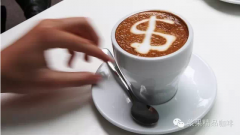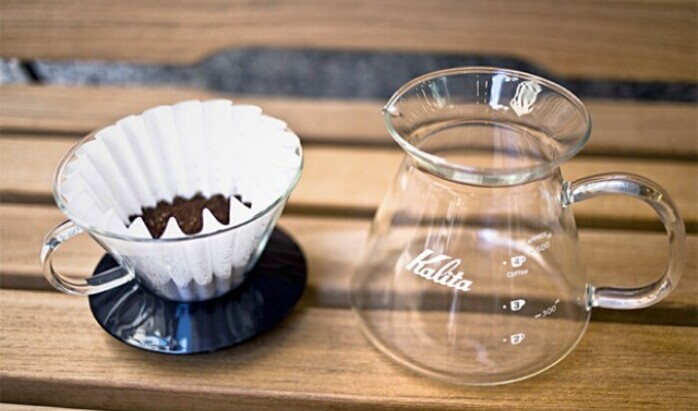Relationship between grinding, extraction rate and concentration the best extraction rate and concentration of black coffee
Coffee extraction is like doing an experiment, controlling the change between solvent (water) and solute (coffee) under environmental variables. How to make the effective substances in coffee dissolve according to demand under appropriate conditions is the experimental theme of all coffee lovers. Shotsmrkt. will regularly collate coffee brewing experiences and imaginations under the name of "coffee addiction".
One of the most important factors in brewing a good cup of coffee is grinding. Proper grinding can fully extract the organic substances that produce flavor in coffee, and improper grinding may cause coffee to be over-extracted or under-extracted. Either way, the coffee will not taste good enough and may even have an unpleasant taste. Coffee can only be fully extracted if it is properly ground. About 30% of coffee is soluble in water, and the remaining 70% is insoluble in water and xylem. Coffee's fascinating flavor is due to the fact that 30% of organic matter dissolved in water stimulates taste buds and olfactory bulb cells to perceive, in terms of taste, a variety of flavors known as sour, sweet, bitter and salty (a fifth flavor can be added). How to adjust the optimal grinding becomes a serious problem that cannot be ignored.
The fly in the ointment, however, is that when this 30% of the substance is completely dissolved in coffee, it is not entirely a good thing, and coffee often tastes too bitter and astringent (mostly caused by organic substances such as quinine and tannic acid). In general, if the extraction rate is higher than 22%(this is not an absolute standard), we call it overextraction. The obvious bitterness and tannins can overshadow the original delicate flavor of coffee. This usually occurs because of too fine grinding and too long a reaction time (i.e., contact time with water). In the case of espresso coffee, over-extracted coffee also tends to be dark brown on the surface Crema edge, rather than the typical tan. The taste was almost covered by bitterness and burning.
On the other hand, if the extraction rate is less than 18%, it can be called insufficient extraction. Because coffee has less organic matter dissolved in water than normal, it tastes thin, lacks layers and tends to have a diluted taste, which is characteristic of coffee when it is under-extracted. In the case of espresso coffee, the surface Crema of the under-extracted coffee solution is less, and sometimes no Crema at all.
In recent years, through special optical refractometers, total dissolved solids (TDS) can be measured according to the refractive index change affected by the amount of solute, and then the weight of dissolved organic matter in the solution can be calculated. When a cup of coffee contains less than 1% of the substance from the coffee bean, our taste buds usually decide that the cup of coffee is too weak. On the contrary, if the content is higher than 2%, it will generally feel too concentrated. Differences between nationality and customary taste are reflected in the strength standards of different coffee boutique associations. For example, the SCAA of the Fine Coffee Association of the United States sets the optimal concentration at 1.2 to 1.4%, while the preferred concentration by Nordic standards is between 1.3 and 1.5%.
When the abrasive particles are finer, the contact time required is relatively shorter. At the same time, because the particles are finer, the contact area with water becomes larger, and the dissolved substances are also relatively increased. Further, coffee grinding degree and coffee dosage, both will directly affect the contact area with the solvent, the more powder, the finer the particles, the larger the contact area with water, when the expected concentration (Strength Concentration) falls within a certain range, the required reaction time is relatively shortened.
Of course, for casual drinking, optimal extraction ratio and concentration are not absolutely necessary considerations, and expensive optical refractometers are not necessarily among the household brewing tools. But mastering every variable of the daily experiment of coffee brewing, eliminating problematic elements, can help you get a cup of black water free of bitterness. Quantified concentrations and extraction rates are the detected fronts.
Whether it is the choice of hand grinder or electric grinder, try to choose the grinding tool that can adjust the thickness and uniformity, at the same time, master the principle of fresh grinding to avoid oxidation and aroma dissipation, this week's "coffee addiction test", give yourself a little task, start from finding the best grinding! Coffee test. Drink and play, with a little obsession.

Important Notice :
前街咖啡 FrontStreet Coffee has moved to new addredd:
FrontStreet Coffee Address: 315,Donghua East Road,GuangZhou
Tel:020 38364473
- Prev

Coffee powder grinding requires coffee bean grinding "grinding", "grinding" and "mortar grinding" black coffee.
There are three kinds of grinding methods for coffee beans: grinding, grinding and grinding. Mortar mill: if you can't find good grinding equipment, all you can do is to use a pestle and a mortar to slowly enjoy the fun of labor. Polishing: most modern machines actually cut up coffee beans at a speed of 20, 000 to 30, 000 revolutions per minute. The consumable parts of this kind of blade grinder have a long life.
- Next

Correctly tasting coffee coffee cafe drinking coffee "cup test" Cupping boutique coffee
The first thing to make clear is that we are more or less able to distinguish the subtleties of coffee: for example, this cup of coffee in hand, um, very fragrant, not overly irritating acid, a bit similar to grapefruit, the taste of grapefruit, and so on. In most cases, we don't need to be trained, and we all know whether we like it or whether it has a particularly unpleasant smell. Drink
Related
- Beginners will see the "Coffee pull flower" guide!
- What is the difference between ice blog purified milk and ordinary milk coffee?
- Why is the Philippines the largest producer of crops in Liberia?
- For coffee extraction, should the fine powder be retained?
- How does extracted espresso fill pressed powder? How much strength does it take to press the powder?
- How to make jasmine cold extract coffee? Is the jasmine + latte good?
- Will this little toy really make the coffee taste better? How does Lily Drip affect coffee extraction?
- Will the action of slapping the filter cup also affect coffee extraction?
- What's the difference between powder-to-water ratio and powder-to-liquid ratio?
- What is the Ethiopian local species? What does it have to do with Heirloom native species?

